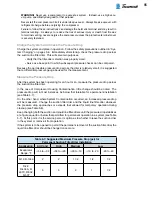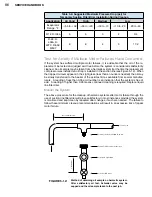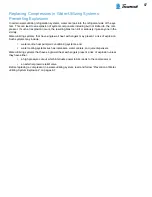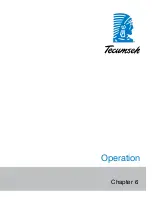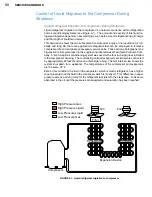
95
Control of Liquid Refrigerant Floodback to the Compressor
During Operation
Liquid floodback during operation (see Figure 6-9) can be caused by fan failure or dirty
clogged filters that can reduce the heat transfer rate to such a point that the liquid refrigerant
floods through instead of vaporizing. When this situation occurs, liquid refrigerant may enter
the compressor under conditions that result in separation of the oil and refrigerant. This
separation may result in an accumulation of the refrigerant under the oil (see Figure 6-10). Thus,
when the compressor is started, the first liquid to be pumped to the bearings will probably be
refrigerant, not oil. Even if this oil-refrigerant separation does not occur, the large amount of
liquid refrigerant in the crankcase will instantly vaporize and boil away the oil charge when the
compressor starts (see Figure 6-11) thereby leaving the compressor oil-starved for many seconds
(see Figure 6-12).
High Pressure Gas
High Pressure Liquid
Low Pressure Liquid
Low Pressure Gas
Fan
Fan
Evaporator
Condenser
Compressor
Expansion Device
Filter
FIGURE 6-9:
Liquid refrigerant floodback to the compressor.
Summary of Contents for AH5540E
Page 1: ...Hermetic Compressor Service Handbook Wholesale Distribution North America...
Page 2: ......
Page 3: ...Hermetic Compressor Service Handbook Ann Arbor MI 48108 REV 3 11...
Page 4: ......
Page 8: ......
Page 9: ...Chapter 1 General Service Safety Precautions...
Page 16: ......
Page 17: ...Chapter 2 Model and Application...
Page 22: ......
Page 23: ...Chapter 3 Compressor Motor and Component...
Page 36: ......
Page 37: ...Chapter 4 Servicing...
Page 38: ...30 SERVICE HANDBOOK...
Page 79: ...71...
Page 80: ......
Page 81: ...Chapter 5 Installation and Replacement...
Page 96: ......
Page 97: ...Liquid refrigerant migration to compressor FIGURE 6 1 Chapter 6 Operation...
Page 108: ......
Page 109: ...Appendix...
Page 113: ...105 Reciprocating Compressor FIGURE A 2 Internal view of typical air conditioning compressor...
Page 118: ...110 SERVICE HANDBOOK Notes...
Page 119: ......





